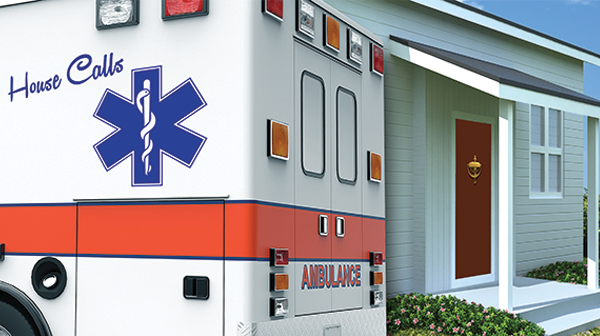
Community paramedicine (CP) supporters argue that diverting 911 patients from the emergency department decreases costs, ambulance wall time (the inability to offload patients in the ED), and ED crowding while providing more appropriate care. Unfortunately, data do not support these assertions. Prehospital diversion of 911 callers threatens patient safety, undermines the prudent layperson definition of an emergency, and erodes Emergency Medical Treatment & Active Labor Act (EMTALA) protections.
Explore This Issue
ACEP Now: Vol 34 – No 06 – June 2015CP Diversion Poses Danger to Patients
Over the past 40 to 50 years, the United States has trained people to call 911 for  perceived medical emergencies, EMTALA was enacted, and ACEP fought to establish the prudent layperson definition. Once requested via 911, an ambulance is dispatched to provide needed prehospital stabilization and transport the patient to an ED. The ED identifies emergency medical conditions and provides stabilizing care without regard for ability to pay. CP programs risk changing that paradigm. If the paramedic determines the patient to be nonurgent, then the paramedic decides, perhaps partially based on payer class, where to transport the patient or perhaps even refuses to transport. We will switch from a prudent layperson to a prudent paramedic definition of an emergency.
perceived medical emergencies, EMTALA was enacted, and ACEP fought to establish the prudent layperson definition. Once requested via 911, an ambulance is dispatched to provide needed prehospital stabilization and transport the patient to an ED. The ED identifies emergency medical conditions and provides stabilizing care without regard for ability to pay. CP programs risk changing that paradigm. If the paramedic determines the patient to be nonurgent, then the paramedic decides, perhaps partially based on payer class, where to transport the patient or perhaps even refuses to transport. We will switch from a prudent layperson to a prudent paramedic definition of an emergency.
There are no validated protocols demonstrating that paramedics have the training, experience, and ability to determine which conditions are nonurgent and, of those nonurgent conditions, which can be safely and efficiently cared for in alternative settings. A 2014 review found that “nearly all of the studies published to date have found significant rates of under-triage by EMS personnel, ranging from a low of 3 percent to a high of 32 percent.”1 The authors opine, “If it is difficult for experienced emergency nurses to accurately identify nonurgent patients, is it reasonable to ask whether paramedics working in the field can do better?”

© SHUTTERSTOCK.COM
As part of the paramedic assessment done in an austere, prehospital environment, some CP programs require a wallet biopsy to determine if the patient has the correct health coverage. The paramedics then decide if the proposed destination has the capability and willingness to care for the patient’s presumed condition. If the patient has the wrong funding or the destination cannot provide the needed care, what will happen? Will 911 be accessed again? Will the patient receive a bill for the clinic visit and the subsequent ED visit? Or because EMTALA only applies in hospital settings, will the patient not receive needed care?
Pages: 1 2 3 | Single Page




One Response to “Opinion: Paramedicine Diversion Programs Pose Patient–Safety Risks”
June 28, 2015
David Persse, MD FACEPTom,
Great to see you in print! I liked your article, and I agree with much of what you said. I also liked Melissa Costello’s counterpoint, and in fact think you are both correct. “Community Paramedicine” is a poorly defined term in my opinion. Its implementation is as varied as the imagination. As it turns out, here in Houston my system has recently (Dec 2014) launched a hybrid version we call Emergency TeleHealth And Navigation (aka ETHAN) for an emergency physician based EMS diversion program. Google “ETHAN EMS Houston” if you are interested. To date we have triaged over 1300 patients with 80% not being transported by ambulance to hospital. About 40% go by cab to a hospital, but the rest are mostly referred to a project member local clinic or given home health instruction.
Anyway, good to read your thoughts.
An old friend,
Dave